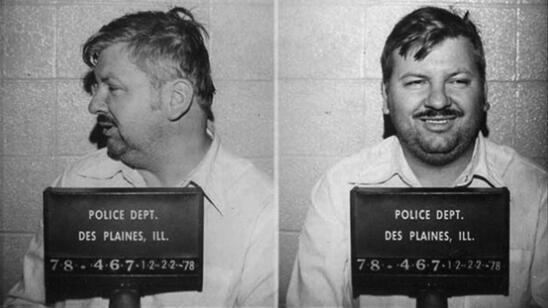There are few deaths as horrifying to imagine as premature burial. From Edgar Allen Poe to Quentin Tarantino (Kill Bill 2), storytellers have captured our imagination for centuries at the nightmarish thought of a (very) early grave. In the late 1800s, several inventors patented alarm-rigged coffins, so that the prematurely interred could call for help.
But not every premature burial is a mix-up. In some horrific cases, a perpetrator will put their victim into the ground before they have drawn their last breath. A&E True Crime looks at some of these noteworthy cases…and the motivation behind them.
Reggie and Carol Sumner
Reggie and Carol Sumner, both 61 years old, were retirees living in Jacksonville, Florida, but the nightmarish final chapter of their life took place in a six-foot deep hole on the other side of the Florida-Georgia border.
The couple, both in frail health, had been targeted for robbery and murder in 2005 by Tiffany Ann Cole, a former neighbor. Along with co-perpetrators Alan Wade, Bruce Nixon and her boyfriend, Michael Jackson, Cole dug a pit for the premature burial several days before breaking into the Sumners’ home, where they robbed the couple, bound them with duct tape and forced them into the trunk of their own car.
From there, the couple was brought to their burial site and tossed in. Jackson would later tell prosecutors he could hear Carol Sumner moan as the group covered them in dirt.
According to Jesenia Pizarro, a professor of criminology at Arizona State University who specializes in lethal violence, group murders are sometimes marked by more shocking violence than what someone may do on their own.
“When we look at crowd violence, there’s a mob mentality,” Pizarro tells A&E True Crime. “Something about being in a group disinhibits individuals from applying their own moral and ethical behavior. That could certainly be at work here.”
The group was caught through Jackson’s fingerprints at the Sumners’ home, as well as photo surveillance of Jackson withdrawing money from the Sumners’ bank account several times. Ultimately, law enforcement tracked Jackson, Cole and Wade to a motel, where a search warrant led to the discovery of credit cards, identification and other documents belonging to the Sumners.
Cole and Wade were convicted of two counts each of first-degree murder, kidnapping and robbery, and sentenced to death. Their sentences were later reduced to life without the possibility of parole. On a plea deal, Nixon received a 45-year sentence. Jackson was sentenced to death.
Jessica Lunsford
Jessica Lunsford was only 9 years old when she was abducted from her Homosassa, Florida, home in 2005 by her neighbor John Couey, a registered sex offender.
After taking Lunsford to his trailer 150 yards away and raping her, Couey placed Lunsford into two black plastic garbage bags with one of her stuffed animals and buried her alive in his backyard. Lunsford was able to tear a hole into one of the bags before dying of asphyxiation.
Couey became a suspect given his extensive criminal record, including repeated sexual offenses against children. Eventually, DNA evidence from a stained mattress and fingerprints from a pizza box found in Couey’s bedroom closet linked him to Lunsford.
Couey confessed to burying his victim alive, which was corroborated by the medical examiner’s report. However, jurors were not allowed to consider the confession on the grounds that detectives had obtained it unlawfully.
Couey was nonetheless convicted of Lunsford’s murder and given the death penalty. He died in prison of natural causes at the age of 51.
Eric Beauregard, a professor of criminology at Simon Fraser University who specializes in sexual murder and serial sex offense, says the motivation for a buried-alive murder like Lunsford’s seems straightforward: sadism.
“The only thing I can see that makes sense is that the offender is doing this on purpose. He knows the victim is still alive, and he wants to inflict pain and agony,” Beauregard tells A&E True Crime. But he adds that the distance created between offender and victim by premature burial is atypical for sadistic killers.
“If you’re sadistic, one of the things you’re looking for is being able to watch the victim suffer. And if you bury the victim alive, of course you can imagine the victim will suffer and perhaps a long time before dying. But it’s not the same.”
Jasmeen Kaur
Still other cases have involved intimate partner homicides. Of those, one notable case involved 21-year-old Jasmeen Kaur, an Adelaide, Australia, resident who was buried alive in March 2021 by her ex-boyfriend, Tarikjot Singh.
Singh had abducted Kaur from her job, bound her with cable ties and tape and buried her alive near Death Rock, a hiking spot in the South Australian outback approximately four hours’ drive north of Adelaide.
Kaur had superficial cuts on her neck that were nonfatal. A postmortem report indicated that it took Kaur a day to die.
Police questioned Singh because Kaur had already reported to police that he was stalking her. He initially told police he didn’t remember the last time he saw Kaur and that he was home the night of her death. He then changed his story to say Kaur had taken her own life and he had just buried her.
During his murder trial, the prosecution stated Singh’s motive was his inability to cope with the end of their relationship
Singh confessed to the murder and was sentenced to nearly 23 years imprisonment.
According to Pizarro, its unsurprising that a “buried alive” victim would be killed by an intimate partner.
“When we’re talking about intimate partner violence, there’s usually a history. It doesn’t happen in a vacuum,” Pizarro says. “There’s usually a history of brutality and abuse.”
Kaur was killed one month after reporting to police that Singh was stalking her.
Related Features
Guns, Knives, Hands: Why Killers Choose Specific Murder Methods
Toxic Endings: When Poison is the Murder Weapon
Murders By Two: Notorious Examples of Folie à Deux


